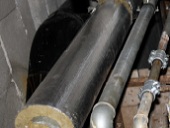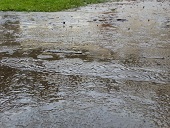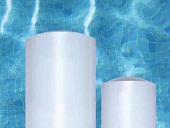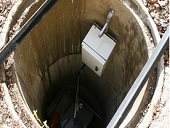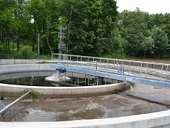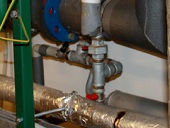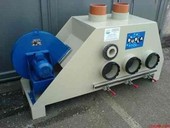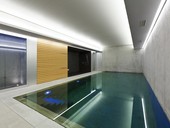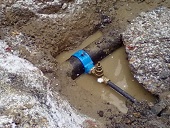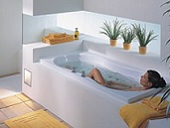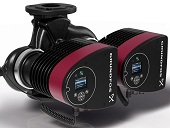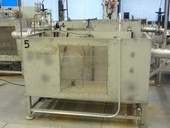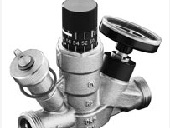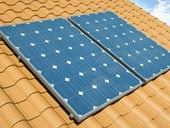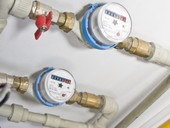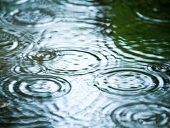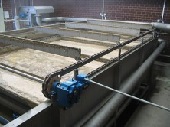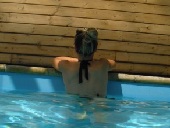How indeed effectively save water? What is the experience with galvanized pipe? How long can water stagnate in the pipes and how to ensure its quality and safety? The decline in the technical level of projects is related to low-priced project work, and with the decline of practical knowledge of young designers.
Archiv článků od 23.7.2012 do 11.3.2013
Infiltration of rainwater runoff as a disposal method of rainwater runoff, become an integral part of rainwater management. The article discusses about quality of rainwater runoff with regard of protection of soil and surface water. Under the project “Increasing of the rain water management efficiency for the purpose of energy demand minimization” we have started our own measurements of rainwater quality parameters at the campus of Technical University of Košice. The aim of this article is to provide overview of our measured data of rainwater quality.
Innovative approach evaluates the extent of the energy used quite effectively (in hot water) for the various types of storage heaters - that are based on uniform assessment base. This approach is very different compared to today introduced inland evaluation of energy performance heaters, according to which they are monitored and evaluated only heat loss at a standstill.
Infiltration system is technical equipment absorbing the excess of rainwater that flows from rooftops, roads, car parks and other buildings. Rainwater management and infiltration systems are very important for rainwater drainage and they offer us many ecological and economical benefits and last but not least they represent widening of technical solution scale for rainwater efficient use.
Sewage water contains organic compounds, thermal and kinetic energy, the amount is about 9 times higher than is needed for cleaning. The biggest source of heat energy are beyond the wastewater treatment plants, hotels, schools, restaurants, hostels, administrative buildings and other public facilities. Also, a wellness center, swimming pools, spas, and hospitals.
At present harmonization CSN 73 6660 Water supply in buildings [7] with the European standard [1] is being in process. After its completion it will finally be available a comprehensive normative means for the proper design and operation of water supply system. The revised standard [7] will be based on the entire European standard [1] and will be complemented by the Czech conditions. In particular it will deal in detail putting into operation of water supply system including its disinfection.
The article deals with the current practical problems associated with the swiming pool hall design issues and implementation of air conditioning systems. Describes the key causes of adverse conditions of internal microclimate. Points to the irreplaceable cooperation mutually cooperating professions, especially with regard to measurement and control of HVAC systems. Here, the article points out the lack of monitoring during the real operation of equipment, including quantification of actual operating costs. These are closely associated with a primary HVAC equipment design itself - pool unit. Its amenities, structure, designed air treatment and subsequent control with regard to the real operating conditions are a determining factor in the effective design and operation. Case studies are compared to alternative solutions and that "as we used to" and "with the active measurement and control system combined with advanced design methods."
Disturbances in the water network can be determined by operator on the basis of monitoring of unevenness curves of daily drinking water consumption. In the case of smaller municipalities, water consumption in the night is almost zero. If it’s not zero for long term monitoring, it is necessary to determine the cause of increased consumption and to find the fault.
Although in the Roman houses bath can be already found, even in the 18th century bathroom was a luxury. Today, the choice of materials, accessories and installation options is wide. When choosing a bathtub it is necessary to choose material and bath accessories in accordance with fittings and application requirements.
The effectiveness of a flotation separation process used in water treatment is influenced by many factors. The paper presents partial results of research on this topic, namely the saturation effect is demonstrated by the treated water and the location of the barrier between the contact and separation zone.
The article presents the current state of the issue of flat hybrid photovoltaic-thermal (FVT) collectors, focused on the differences between the basic types of collectors, their advantages and disadvantages. There is also presented an overview of the current global manufacturers. The article aims to highlight the problems but also the opportunities associated with different types of the hybrid FVT collectors.
Hydraulic control of heating systems means - except hydraulic control of central heating - hot water system control. Despite the fact that hot water system control is the duty of the law, unlike hydraulic control of heating systems that have been implemented since 1998, hot water systems are controlled sporadically.
Chemical composition of atmospheric precipitation over the territory of the Czech republic are subject to long-term monitoring. In principle, source (point and diffuse) of pollution can be divided into caused by human activities and natural resources, mostly related to aeolian activity, increased by dust or volcanic activity.
The air flotation started to use in the area of drinking water treatment at first abroad, where in the second half of last century was used as a first stage of the two-stage water treatment plant. Flotation was used first time in the Czech Republic in the water treatment plant Mostiště in 2005. At the present time this process have started to promote mainly by reconstruction of drinking water treatment plants.
In terms of energy savings Annex 11 of the Decree is very interesting. It sets the intensity of the recirculation of water for bathing and swimming pools. The requirement for continuous measurement of the intensity of recirculation and its recording for each pool separately is effective from 31st December 2015.
zpět na aktuální články
